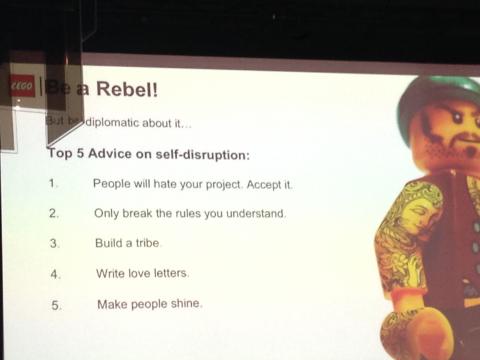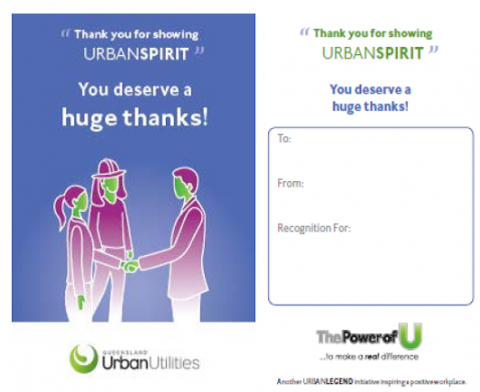In my last article, I described some of the innovation principles that helped LEGO avoid bankruptcy in 2004. Now to expand on LEGO’s tips regarding what we can do individually to foster innovation. David Gram, head of marketing at LEGO’s Future Lab, the innovation hub of the company, shared these tips during a breakfast seminar in Melbourne.

Be a diplomatic rebel!
Over eggs and bacon, David Gram had this crunchy recommendation regarding how we can be successful innovators in our workplace: “Be a rebel!”. He reinforced his point the LEGO way with a slide of a fearsome LEGO pirate.
Once the laughs had subsided, he added “…but be diplomatic about it to have followers. In other words: Become an intrapreneur!” Intrapreneurs are the rebels in their own organisation. They ‘self-disrupt’ and challenge the status quo. AND they need to be prepared to be challenged themselves. From David Gram’s ‘Top 5 tips for self-disruption’:
Tip 1: “People will hate your project. Accept it.” Henry Ford already knew this: ”When everything seems to be going against you, remember that the airplane takes off against the wind, not with it."
Tip 2: “Only break the rules that you understand.” It is important that the disruption happen in a controlled way. Before new, innovative LEGOs are released to the market, they need to pass a number of gates, such as comparison against toy trends that LEGO are continuously and carefully researching. LEGO decided to build one team of experts who truly understand the rules of innovation. Other companies, particularly more process-oriented rather than product-oriented ones, prefer to encourage all their staff to be innovators to improve processes and services. More information in this article from the Harvard Business Review: “Innovation Is Everyone’s Job”.
Tip 3: “Build a tribe.” Getting the executive’s support is a very important starting point. Regarding the easiest way get executive buy-in to a new, radical idea, David Gram is on exactly the same page as Karlene Maywald, the former Minister for Water Security of South Australia. At a recent Women in Water breakfast hosted by WSAA she recommended: “Never waste a crisis!” A crisis can get new ideas over the line that otherwise may not be acceptable, be it the introduction of water trading in the Murray Darling in context of the drought, or the introduction of LEGO Future Labs when the company hit financial rock bottom.
Knowing the customers’ needs and values is another key competitive advantage. The evidence that your customers really want something (be it a product or service) adds a powerful and convincing trump card to your pitch. In addition to running customer surveys, LEGO now have an elegant option through using democratised development. On the interactive site ideas.lego.com people can vote which toy should be the next to hit the markets.
Building on Tip 3, Tips 4 and 5 are: “Write love letters” and “Make people shine.” Successful innovation can’t be done in isolation, but requires a team (and ‘everything is awesome … when you’re part of a team!’). With these two tips, David Gram wanted to highlight the importance of creating trust across the entire organisation and the importance of honest appreciation of what other teams have to offer. At LEGO this means engaging across the entire firm and tapping into the knowledge and experience of other teams. At Queensland Urban Utilities ‘love letters’ in the form of appreciative postcards are used to say thank you to all staff who participated in their innovation process.

‘Making people shine’ through collaborative exchange acknowledges the ideas of other teams. Through listening to and learning from each other, more effective and efficient cross-organisational processes can be designed. Bringing together people from different teams that usually don’t collaborate directly, yet have important common connection points, can lead to important process innovation. To give an example, when trying to tackle water quality issues, new ideas can emerge from bringing together customer contact staff, network operators, and mains replacement planners.
What can you do to become more intrapreneurial today? Who could you engage with to come up with new, innovative ideas to improve a process, service or product? If you have an idea that is hard to get off the ground, don’t be disheartened by an initial rejection; instead, reflect on your communication strategy: Is there a crisis you can leverage? How can you extend your ‘tribe’ of supporters?
Happy innovating!
